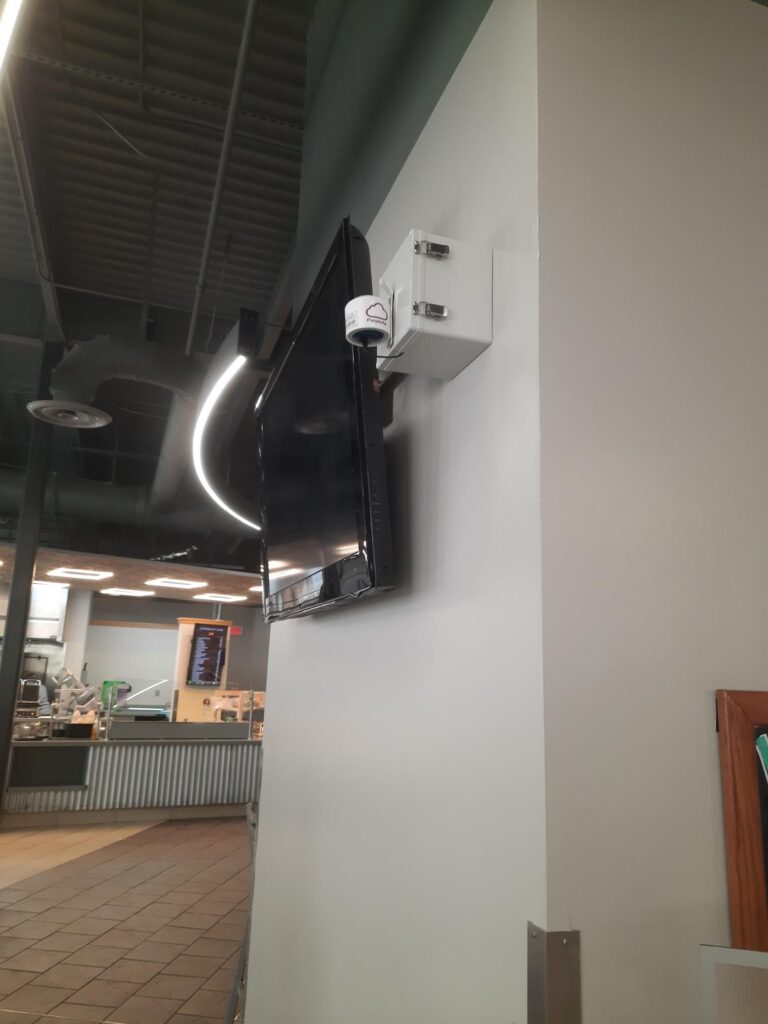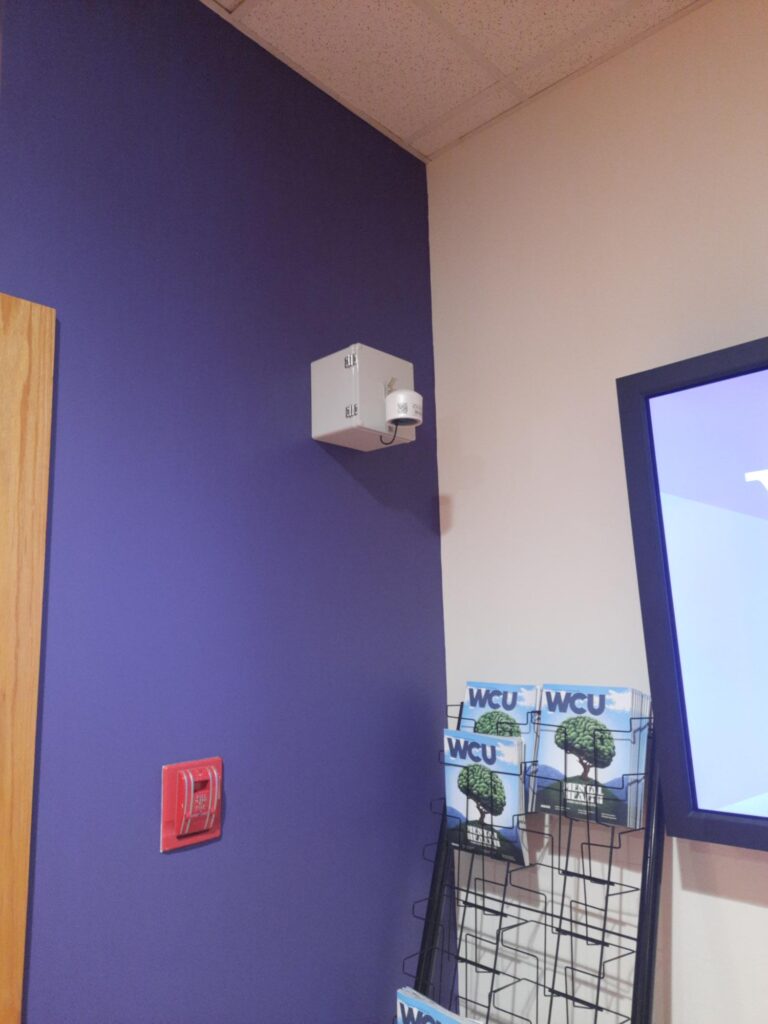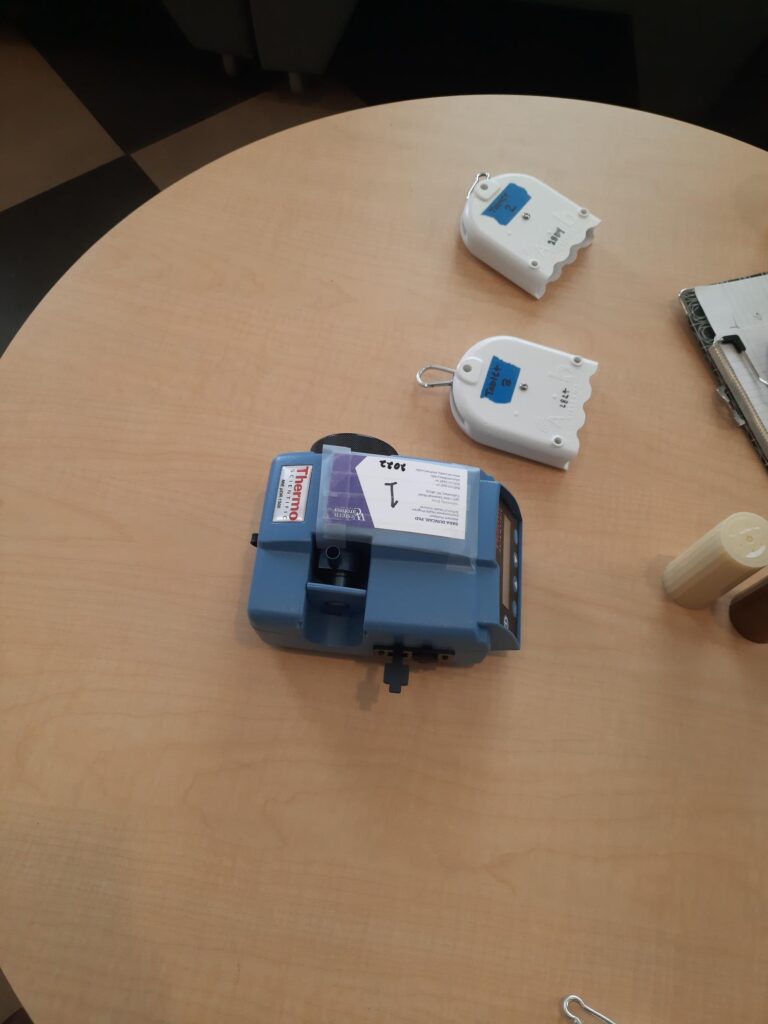Version of the story first published in print for The Western Carolinian.
WCU’s Whee Breathe will add an analysis for the air quality on campus retrieved from Purple Air monitors by the end of the spring 2023 semester.

Whee Breathe is a club started by Dr. Sara Duncan, a biology professor and expert on air quality, in 2019 with a group of students.
The goal of the club is to measure air quality around campus using Purple Air monitors.
“My background is environmental science, but I am passionate about understanding how the environment impacts us and also vice versa,” Duncan said.
Purple Air monitors are a pollution sensor that measures particulate matter, temperature and relative humidity, according to Whee Breathe’s website.
There are four outdoor sensors at the Health and Human Sciences Building (HHS), the outdoor track, the Jordan-Phillips Field House and Apodaca Science Building. Two indoor sensors are inside Courtyard Dining Hall and the Hinds University Center (UC). The sensors were installed in Spring 2022.
Duncan describes why it is important that there are two indoor monitors, especially since they are in areas where students are often around.
“Where do you breathe most of your breaths? Inside. And so, if we don’t characterize indoor air quality, then we’re missing like a huge swath of exposure,” Duncan said.

She said that there is not a significant change in the air quality on campus since her group started monitoring the air in 2019.
Duncan and her air quality lab students will post an air quality analysis on the Whee Breathe website on data they collected by the end of the semester.
Live time data from these Purple Air monitors can be viewed on air.wcu.edu. The air quality on campus is relatively good, with the outdoor sensor levels being green. On April 12, the air quality in the dining hall was in the red and the Apodaca Science center’s level was acceptable at orange.
“This [Purple Air monitor] is particle collection, so those little, tiny particle pollutions you see in smoke, we see in Courtyard Dining Hall, and we’ll see a small increase during mealtimes. And it seems like ‘oh my gosh their air quality is horrible,’ but when you fry things, you cook things, you will get some convection,” Duncan said.
On March 4, three groups of students from Duncan’s air quality lab went to locations on campus to monitor the air quality using a PDR 1500 and an AirBeam. The air quality lab students are also working on an abstract comparing high priced air monitors and their effectiveness like the PDR 1500 priced at $10,000 and the low-cost monitors, the AirBeams, at $249.

One of her student, Nick Lundy, was in rotation with four other students monitoring particulate matter at the Courtyard Dining Hall from 8 a.m. to 8 p.m.
“They wanted to be there during three different meal periods as well as the non-meal periods to see how air quality changed throughout the day,” Duncan said.
The particulate matter (PM2.5), suspend units of conglomerated solid or liquid material in the air, detected from Lundy was at 8 μg/m 3 in the Courtyard Dining Hall, which according to the indoor hygiene institute, is considered healthy with little to no risk of exposure since it is below 12 μg/m 3 and is not at or below 35 μg/m 3 which is considered unhealthy and dangerous.
Duncan expressed how there are different particulate pollutants for different areas on campus. For example, a common pollutant is grease or cooking emissions in the dining hall. Other particle pollutants on campus are vehicle exhaust, cigarette and vape smoke, construction dust, pollen, wood burning stoves, prescribed burns and wildfire smoke and reactions in the atmosphere from gases released from trees.
A related story from Mountain Xpress: Air quality continues to improve, but vigilance remains essential



